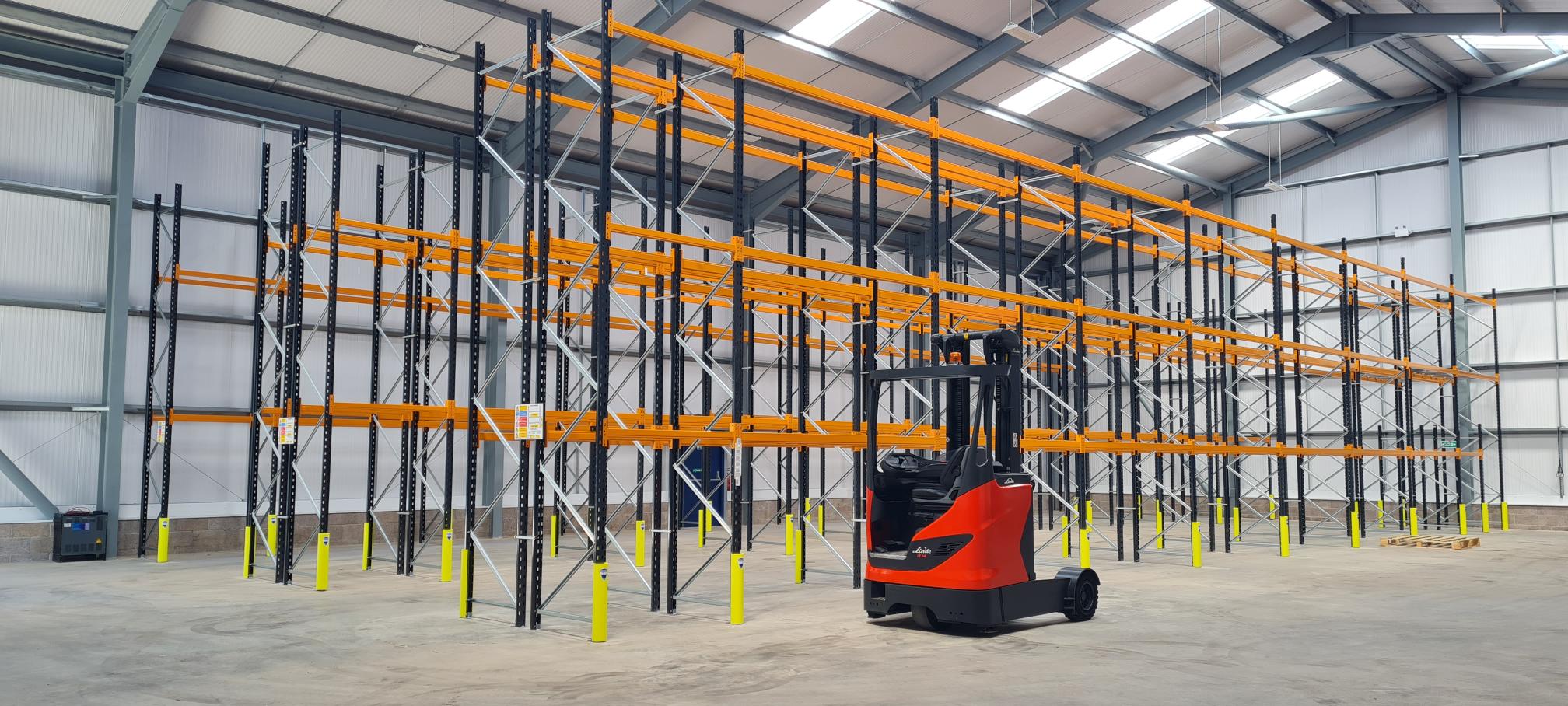
Maximise Space, Minimise Hassle
Introduction
In the world of warehousing and logistics, efficient storage solutions are the backbone that supports the smooth operation of supply chains globally. Among these solutions, pallet racking stands out as a fundamental component, providing an organised, durable, and accessible means of storing inventory. However, the decision to invest in pallet racking is not one to be taken lightly. With a myriad of options available, each designed to cater to specific needs and challenges, selecting the right pallet racking system is crucial for optimising storage, improving efficiency, and ultimately, driving business success.
This blog post aims to guide you through the essential considerations before making a pallet racking purchase. From understanding your storage needs and warehouse layout to choosing the right type of racking system and ensuring it meets quality and safety standards, we’ll cover all the bases to help you make an informed decision. Whether you’re setting up a new warehouse, looking to improve an existing facility, or simply curious about the benefits of different pallet racking systems, this post will provide valuable insights to navigate your purchasing journey.
Understanding Your Needs
Before diving into the vast sea of pallet racking options, it’s essential to anchor yourself with a clear understanding of your specific storage needs. This understanding will not only help you choose the most suitable racking system but also ensure that your investment optimises your storage space and operational efficiency. Here are the key factors to consider:
Capacity Requirements
- Weight Limits: Each pallet racking system is designed to support a maximum weight limit. Overloading a rack can lead to structural failure, posing serious safety risks. It’s crucial to calculate the maximum weight of the goods you plan to store and ensure that the racking system can comfortably support this weight over its entire lifespan.
- Size Dimensions: The size of your products also plays a vital role in selecting the right racking. Consider both the dimensions of the items to be stored and the maximum height your warehouse can accommodate. This will help in choosing a racking system that maximises vertical space without compromising safety or accessibility.
Inventory Management
- Accessibility: Depending on the nature of your inventory and the frequency of access required, the accessibility of goods can be a determining factor in selecting a racking system. Systems like adjustable racking are ideal for high-turnover inventory requiring immediate access, while denser options like drive-in racking might suit bulk storage of similar items better.
- Turnover Rate: High-turnover products need a storage solution that allows for quick and efficient picking. Understanding your inventory’s turnover rate will guide you towards a system that balances storage density with accessibility, ensuring a smooth workflow.
Warehouse Layout
- Space Utilisation: Maximising warehouse space is a priority for most businesses. The layout of your warehouse, including floor space and ceiling height, will influence the type of racking system that can be installed. Systems like narrow or very narrow aisle (VNA) racking, push back racking, drive-in racking & mobile racking offer a more footprint-efficient solution for limited areas.
- Flow of Operations: The arrangement of your pallet racking should facilitate a logical flow of operations, from receiving to shipping. Consider the movement of goods through your warehouse and how different racking systems might enhance or hinder this flow.
Understanding these needs is foundational to making a decision that aligns with your operational goals and ensures the safety and efficiency of your warehouse operations.
Types of Pallet Racking Systems
The choice of pallet racking systems is vast, each designed to meet different storage, accessibility, and space utilisation needs. Here’s a closer look at some of the most common types:
Adjustable Racking
- Overview: The most common type of pallet racking, offering direct access to every pallet.
- Best Use Cases: Warehouses with a wide variety of products and SKUs, requiring immediate access.
Very Narrow Aisle Racking (VNA)
- Overview: Similar to adjustable racking but with much narrower aisles, maximising storage space and requiring specialised handling equipment.
- Best Use Cases: Warehouses prioritising space optimisation and high-density storage without the need for large-scale item variety accessibility. Ideal for operations with a consistent product line that maximises storage space efficiency.
Drive-in/Drive-through Racking
- Overview: High-density storage solutions that allow forklifts to drive into the rack lanes.
- Best Use Cases: Storing large quantities of similar items, suitable for LIFO (Drive-in) or FIFO (Drive-through) inventory systems.
Push Back Racking
- Overview: Pallets are stored on wheeled carts that push back along rails when new pallets are added.
- Best Use Cases: Medium-turnover products, offering high-density storage with better accessibility than drive-in systems.
Pallet Flow Racking
- Overview: Utilises gravity rollers for automatic pallet rotation, ideal for FIFO inventory management.
- Best Use Cases: Perishable goods or items with expiration dates, ensuring oldest inventory is always accessible.
Mobile Racking
- Overview: Mounted on guided mobile bases, this racking can be compacted together to save space and moved apart to access aisles.
- Best Use Cases: Ideal for cold storage or warehousing environments where space is at a premium and selectivity needs to be balanced with high-density storage. This system maximises storage capacity by eliminating multiple aisles and providing direct access to every pallet when needed.
Cantilever Racking
- Overview: Designed with arms to store long, bulky items without front column obstruction.
- Best Use Cases: Long items like timber, pipes, and boards, providing easy loading and unloading.
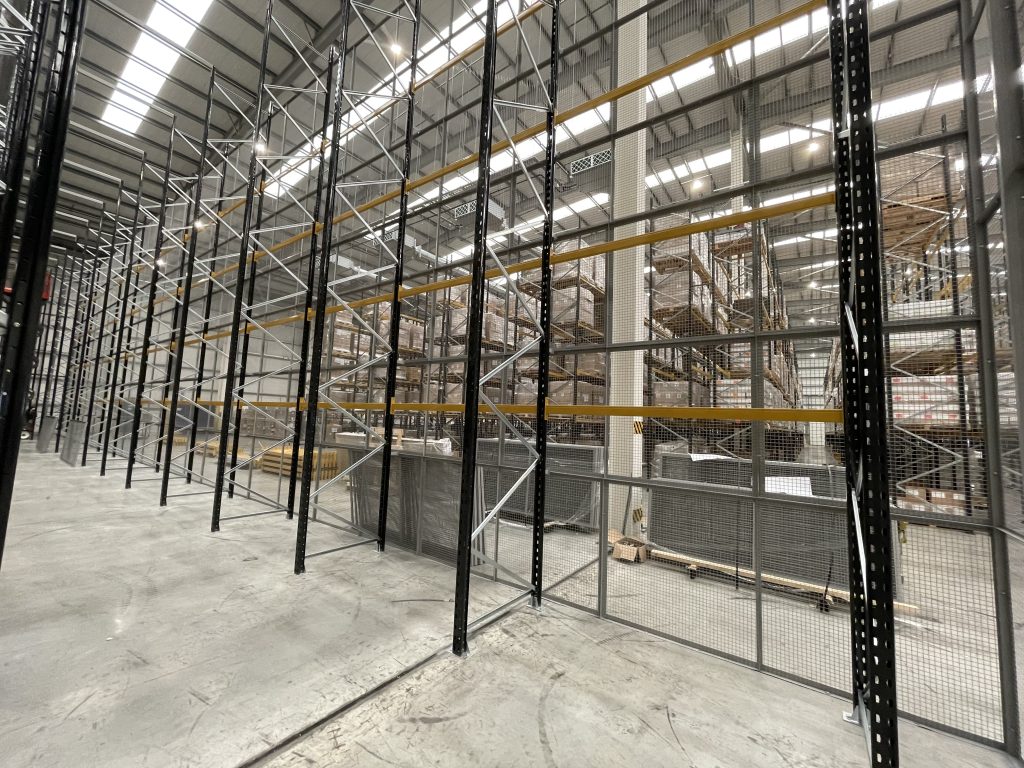
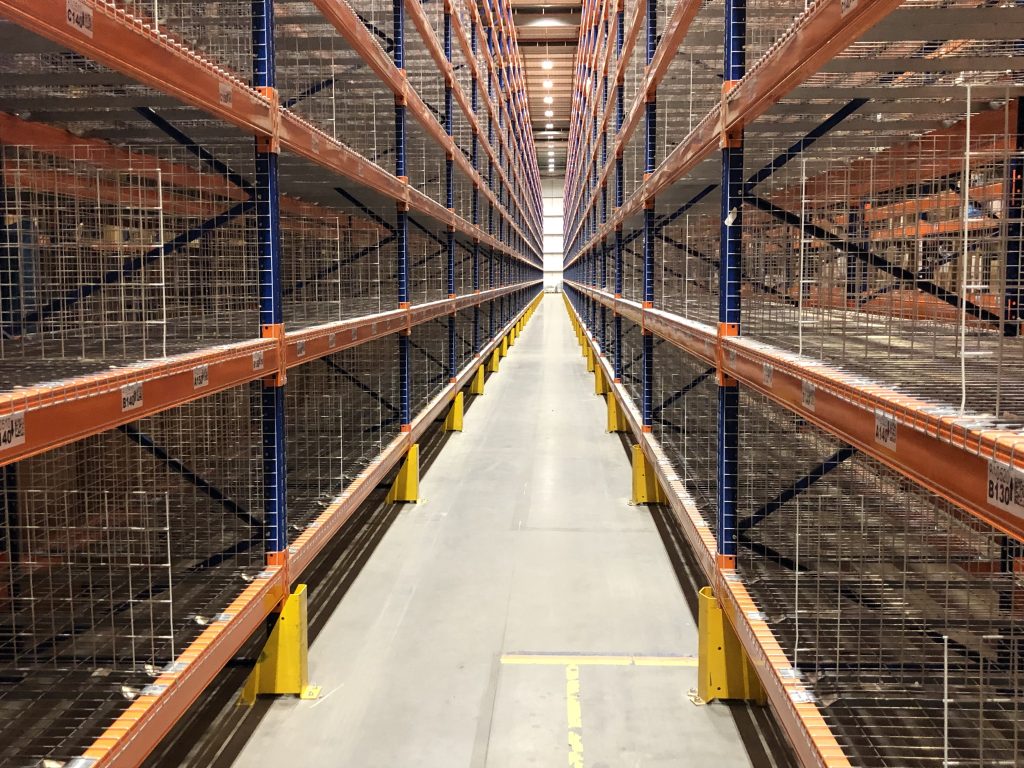
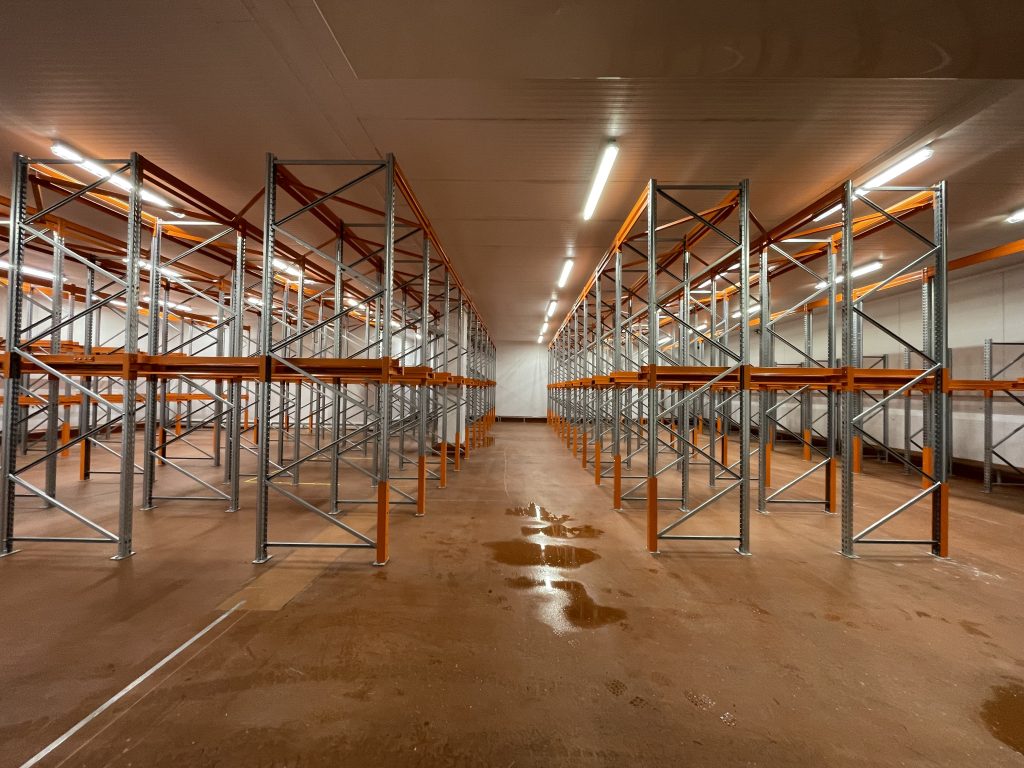
Considerations for Purchase
When investing in a pallet racking system, several critical considerations come into play to ensure that you not only choose the right type for your needs but also get the best value and safety from your investment.
Quality and Durability
- Material Quality: The quality of materials used in the racking system is paramount. High-grade steel is a common choice for its strength and durability. Ensuring the materials meet industry standards can save costs and enhance safety in the long run.
- Construction and Design: Look for systems designed to withstand the wear and tear of your specific warehouse operations. Durability in design includes considerations for load distribution, resistance to impact, and adaptability to different load sizes.
Safety Features
- Load Capacity: It’s vital to choose a racking system that can safely support your intended load without risk of collapse. Always adhere to the manufacturer’s load capacity guidelines.
- Safety Accessories: Investigate the availability and compatibility of safety accessories like guardrails, back stops or anti-collapse mesh, and column protectors that can help prevent accidents.
Cost Analysis
- Initial Investment vs. Long-Term Benefits: While the initial cost is an important factor, it’s essential to consider the long-term benefits of the system, including durability, adaptability, and maintenance costs.
- ROI: Evaluate the return on investment by considering how the racking system will improve your operation’s efficiency, reduce damaged goods, and utilize space more effectively.
Vendor Reputation and Support
- Reputation: Research vendors to ensure they have a strong track record of providing quality products and services. Customer testimonials and case studies can offer insights into their reliability and the performance of their racking systems.
- Support Services: Post-sale support, including installation, maintenance, and repair services, is crucial. A reputable vendor should offer comprehensive support to address any issues that may arise.
Making an informed decision on pallet racking involves balancing these considerations to find a system that meets your operational needs, budget, and safety requirements. It’s a long-term investment that can significantly impact the efficiency and safety of your warehouse operations.
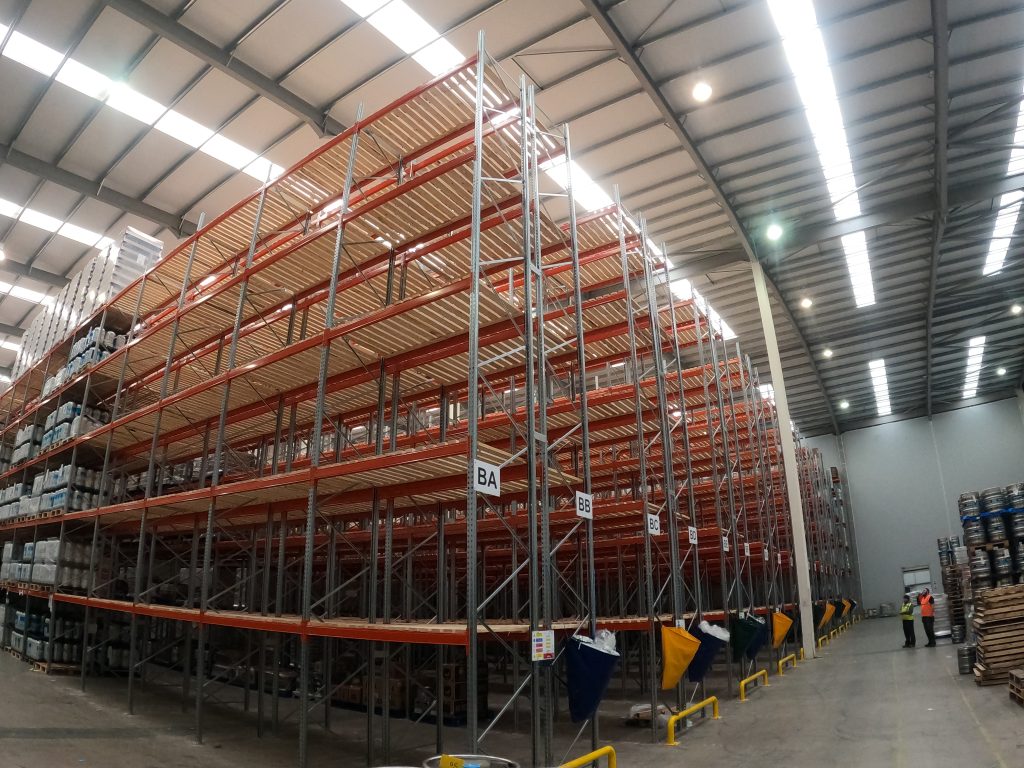
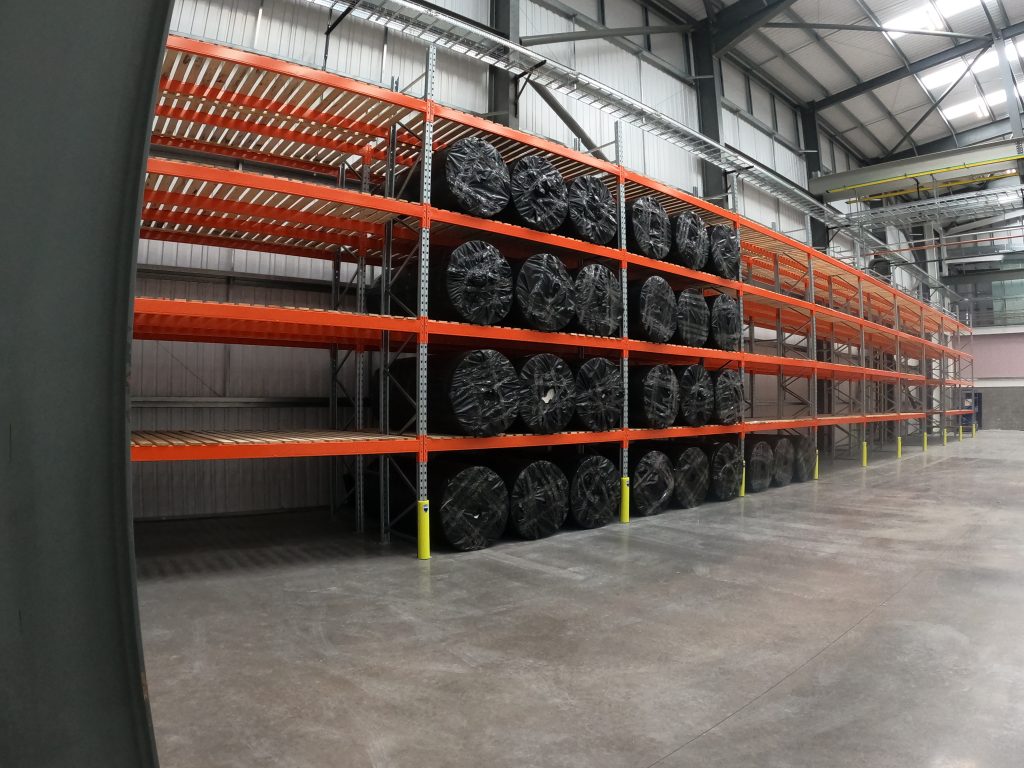
Installation and Maintenance
Proper installation and regular maintenance are key to ensuring that your pallet racking system remains safe, functional, and efficient throughout its lifespan. Here are some essential tips and considerations:
Preparing for Installation
- Site Preparation: Before installation, ensure that your warehouse floor is clean, level, and capable of supporting the weight of the racking system and the stored goods. Consider professional floor assessment if necessary.
- Professional Installation: Professional installation by certified technicians can ensure that the racking is set up according to manufacturer specifications and safety standards. This can prevent costly errors and accidents.
- Compliance with Regulations: Familiarise yourself with local codes and regulations regarding warehouse storage systems. Professional installers should also be aware of these requirements to ensure compliance.
Routine Maintenance
- Regular Inspections: Conduct regular inspections of the racking system for signs of wear, damage, or misalignment. Early detection of issues can prevent accidents and costly repairs.
- Load Management: Continuously monitor and manage load distribution to prevent overloading and ensure that the weight is within the specified limits of the racking system.
- Damage Repair: Address any damage immediately. Minor damage can compromise the structural integrity of the entire system. Use original parts for repairs to maintain the system’s strength and integrity.
Training and Safety
- Staff Training: Ensure that all personnel are trained on the proper use of the pallet racking system, including safe loading techniques, understanding load limits, and recognising signs of damage or instability.
- Safety Equipment: Invest in safety equipment such as rack guards, column protectors, and anti-collapse mesh to minimise the risk of accidents and damage to the racks and stored goods.
Proactive maintenance and safety management are essential to maximising the return on your investment in pallet racking. By following these guidelines, you can ensure a safe and efficient storage environment that supports your operational needs and protects your assets.
Conclusion
The journey to selecting and implementing a pallet racking system is intricate, requiring careful consideration of various factors to ensure that your warehousing needs are met efficiently, safely, and cost-effectively. From understanding your specific storage requirements and warehouse layout to choosing the right type of racking system and ensuring it adheres to quality and safety standards, each step plays a crucial role in optimising your storage solutions.
We’ve explored the importance of assessing your capacity requirements, inventory management needs, and the physical constraints of your warehouse to guide your choice of racking system. We’ve delved into the different types of pallet racking systems available, each with its unique advantages and use cases, from adjustable racking for versatile storage needs to high-density options like drive-in/drive-through systems for bulk storage.
Moreover, considerations for purchase such as quality and durability, safety features, cost analysis, and vendor reputation were highlighted to ensure that your investment is sound and yields long-term benefits. The significance of professional installation and routine maintenance cannot be overstressed, as these are critical to maintaining the safety and efficiency of your racking system over time.
In conclusion, investing in a pallet racking system is a significant decision that can greatly impact the effectiveness of your warehouse operations. By taking the time to thoroughly research and consider the factors discussed, you’re well on your way to choosing a system that not only meets your current needs but also accommodates future growth. Remember, the goal is not just to store products but to enhance operational efficiency, safety, and profitability. We encourage you to consult with professionals and leverage their expertise to make the most informed decision for your business.
Final Thoughts
As you move forward with your decision-making process, keep in mind that the world of warehousing and logistics is ever-evolving. Staying informed about the latest trends, technologies, and best practices in pallet racking and storage solutions will ensure that your investment continues to pay dividends well into the future.

